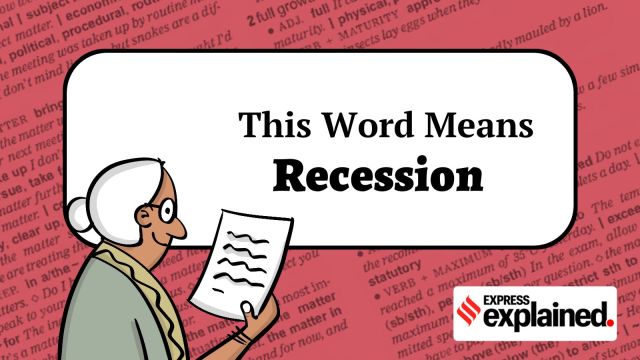Udit Misra is Senior Associate Editor. Follow him on Twitter @ieuditmisra ... Read More
© The Indian Express Pvt Ltd
- Tags:
- Express Explained
Latest Comment
Post Comment
Read Comments
 Every day, 500 words on a word (or expression) that has appeared in The Indian Express.
Every day, 500 words on a word (or expression) that has appeared in The Indian Express.Why now?
US stocks have plunged, the constant talk of tariffs has caused uncertainty, and a survey has shown that mood among American consumers is pessimistic, even as an economic adviser to President Donald Trump has dismissed talks of a recession in the US economy.
What is it?
To better understand ‘recession’, it is helpful to understand the terms ‘technical recession’ and a ‘recessionary phase’ of an economy.
What is a recessionary phase?
At its simplest, in any economy, a recessionary phase is the counterpart of an expansionary phase. In other words, when the overall output of goods and services — typically measured by the GDP — increases from one quarter (or month) to another, the economy is said to be in an expansionary phase. And when the GDP contracts from one quarter to another, the economy is said to be in a recessionary phase.
Together, these two phases create what is called a “business cycle” in any economy. A full business cycle could last anywhere between one year and a decade.
When a recessionary phase sustains for long enough, it is called a recession. In other words, when the GDP contracts for a long enough period, the economy is said to be in a recession.
There is no universally accepted definition of a recession — as in, for how long should the GDP contract before an economy is said to be in a recession. But most economists agree with the definition that the National Bureau of Economic Research (NBER) in the United States uses.
According to NBER, “During a recession, a significant decline in economic activity spreads across the economy and can last from a few months to more than a year”.
The NBER’s Business Cycle Dating Committee typically looks at various variables — employment, consumption etc — apart from GDP growth to arrive at a decision. It also looks at the “depth, diffusion, and duration” of decline in economic activity to determine whether an economy is in a recession or not.
While the basic idea behind the term “recession” — significant contraction in economic activity — is clear, from the perspective of empirical data analysis, there are too many unanswered queries.
For instance, would quarterly GDP be enough to determine economic activity? Or should one look at unemployment or personal consumption as well? It is entirely possible that GDP starts growing after a while but unemployment levels do not fall adequately.
During the 2008 global financial crisis, NBER pegged June 2009 as the end date for the recession but some metrics did not recover for much longer. For instance, “non-farm payroll employment did not exceed the level of the previous peak until April 2014,” according to NBER.
To get around these empirical technicalities, commentators often consider a recession to be in progress when real GDP has declined for at least two consecutive quarters.
That is how real quarterly GDP has come to be accepted as a measure of economic activity and a “benchmark” for ascertaining a “technical recession”.